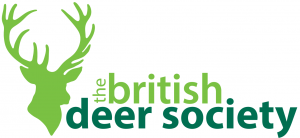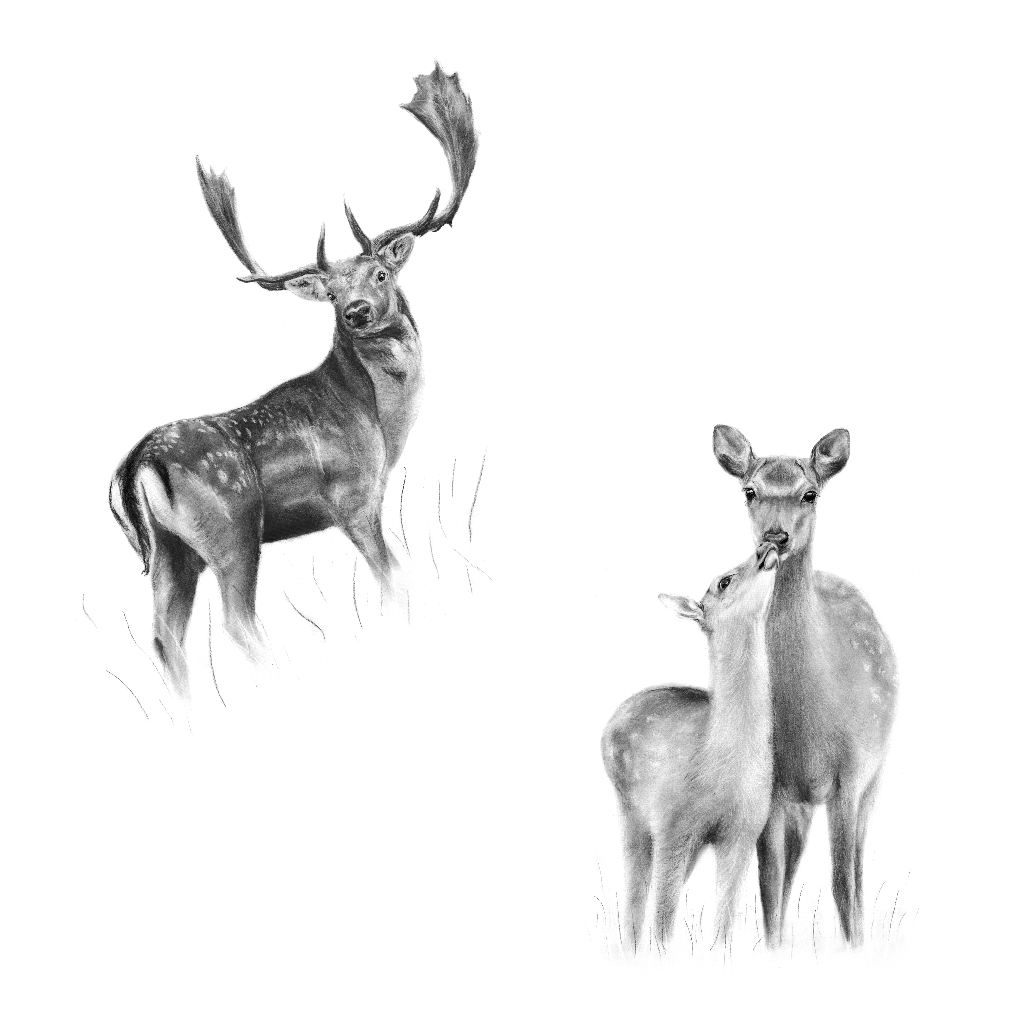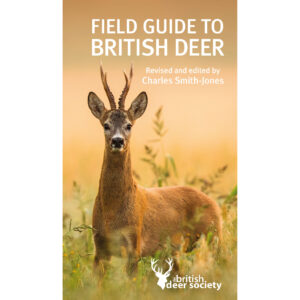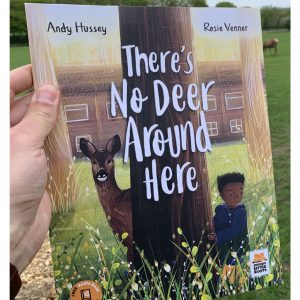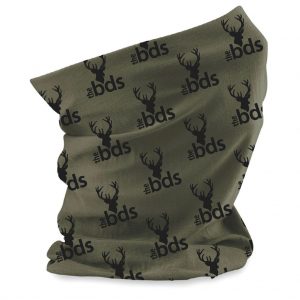BDS Response to the Deer Working Group Report and Recommendations
Share article:
The Trustee Directors [the Board] of the British Deer Society and its Scottish Area Council commend the Deer Working Group on their detailed report which is in the main well-presented and attempts a proper and comprehensive review of the published literature relevant to each of the topics considered.
However, there are a number of areas where individual recommendations or the justifications used in support are of some concern or may have unforeseen implications and we would wish to draw the attention of the Cabinet Secretary and the wider committee on Environment, Climate Change and Land reform to these particular points in the accompanying commentary. Read response
Deer Working Group Report: British Deer Society comments
- The British Deer Society exists to disseminate, as widely as possible, accurate and up to date information on deer biology and the effective management of deer populations and their impacts, to ensure the humane treatment of deer and help deliver healthy deer populations in a sustainable balance with their environment.
- The Society has considered carefully the Deer Working Group’s Report and commends the Group for the considerable effort taken in reviewing the historical and legislative context and relevant recent research underpinning its various recommendations. In the main, the report’s conclusions and recommendations are well-presented and based on a genuine attempt at a comprehensive review of the relevant legislation and science.
- The Report and its implications have been carefully reviewed by the Society’s Scottish Area Council and by the full Board and the Board would like to offer the following comments to the Environment, Climate Change and Land Reform committee. While we include a number of minor points for consideration, the major issues which concern stalkers and managers themselves are likely to revolve around proposed changes to male and female seasons and relaxation of the circumstances in which authorisation may be given for night-shooting. There may also be concerns about proposed changes in legislation on weapons and ammunition.
- In overview, at the recent AGM of the BDS Scottish Area Council, concerns were expressed that the whole tenor of the Report and its recommendations entailed a general relaxation of concern for the welfare and humane treatment of deer in a drive to try to get increasing numbers culled. Whilst the Board fully understands the strategic imperatives behind facilitating a more effective approach to modern deer management, we believe that allowing the pendulum to swing too far in the opposite direction (and thereby undoing much of the original intent of the Deer Act) will simply result in the long term removal of many of the safeguards designed to protect and enhance deer welfare.
- We would not in this response attempt to address every section or Recommendation and indeed would adopt a policy of ‘agreement by exception’ rather than highlight all recommendations which are significant to us. However, there are some areas where individual recommendations or the justifications used in support are of some concern and we would seek to comment on those particular points as follows:
Weapons and ammunition: [Section 4 paragraphs 5 – 31]
- The Working Group’s recommendations on weapons and ammunition suggest that the Scottish Government should make a clear commitment to end the use of lead bullets to shoot deer in Scotland, carry out the necessary research and promotion to enable that change to be made after a transition period and, as a part of that, make appropriate amendment to The Deer (Firearms, etc.) (Scotland) Order 1985; and that the minimum weight of a bullet for use on the larger species of deer be reduced to 80grns, (5.13 grammes), to accommodate the use of small calibres, such as .243 when using non-lead bullets.
- The BDS is concerned that reductions in the density and weight of bullets when managing the larger species of deer may adversely impact on deer managers’ ability to achieve humane culls. Reductions in the effectiveness of ‘knock-down’ and increased risks of wounding animals, are more likely when lighter bullets are delivered through smaller calibres. We note that there appear to be significant problems associated with the design of non-lead ammunition, particularly for smaller calibre rifles such as the .243, or potentially the even smaller calibres such as .224 (.22 centrefire calibres); moreover, the necessary increases in bullet length to provide the equivalent weight, result in increased side wind effects on trajectories. This has clear implications for miss-placed bullets that cause wounding and a failure to deliver a quick and humane death.
Shotguns
- The BDS is content to further restrict, via the introduction of Authorisations, the use of shotguns with specific ammunition, as set out in The (Deer Firearms etc.) (Scotland) Order 1985. The Board appreciates that there are certain limited circumstances where a shotgun and prescribed ammunition deliver a reduced risk. However, Authorisations should only be available on a very limited basis and the operatives must be ‘Fit and Competent’; the BDS has long argued that the general and widespread use of shotguns runs contrary to widely endorsed principles and practices of humane deer management. The Board continues to endorse the use of shotguns and appropriate cartridges for the dispatch of wounded and incapacitated deer, as per Section 25 of the Deer (Scotland) 1996 Act.
Seasons: [ Section 5 paragraphs 32- 60; 61- 66 and Recommendation 8]
- The Board feels strongly that the welfare implications of orphaning juveniles before they were fully nutritionally-independent, or socially-independent of their dams, was underplayed in the report. Concern was also expressed that many managers find it distasteful to cull and gralloch heavily pregnant females, although it was recognised that extension of the legal season makes no compulsion to cull at such times.
- It is recognised that current and historic close season for male deer was largely directed towards some form of resource-sharing and not primarily based on welfare concerns. However, while it was acknowledged that the welfare case for a close season for males was less powerful than that requiring close seasons for females, there was still some argument for having a short period of ‘relief’ at the end of the rut and for as much as 4 weeks afterwards, to avoid harassing males exhausted by the exertions of the rut.
- Concern was also expressed that abandonment of a close season for male deer (and the preference of many vocational stalkers for culling antlered males) might lead to an overall reduction in the number of females culled, while it is often this female cull which is more crucial for management. It was noted that heavier culling of males might also result in a growing imbalance of numbers between adult male and adult female deer in many species, resulting in a pronounced skew in adult sex ratios which has in other areas caused a number of social problems (e.g. among fallow populations of the south of England, Thirgood 1995).
- The BDS Board accepts that, from a purely welfare perspective, it is hard to justify the differences in the beginning of the closed seasons afforded to female deer as, despite timing differences in the rut, most female deer give birth at approximately the same time of year. Therefore, the British Deer Society could logically endorse a closed season for all female deer from 1 April to mid-October; this would afford deer managers greater flexibility in choosing the right time to cull female deer and, at the same time, deliver greater protection for juveniles at a critical time in their physical and social development.
Nightshooting [ Section 4 paragraphs 38 -40; Section 6 paragraphs 17- 18 and Recommendation 7].
- The BDS would endorse the recommendation that any increase in licences for night-shooting should wait for the results of ongoing reviews by SNH and others of the welfare implications associated with night-shooting However, it would seem essential, if such review is to be used as a basis for changing existing regulations, that the results of that review are made subject to scrutiny by an independent panel of experts drawn from professional scientists and representatives of the industry, rather than that assessment is left simply internal to SNH.
- Main considerations around night-shooting retain the need for authorisations, although the Deer Working Group recommends that the circumstances for granting such authorisations be relaxed (Section 6 paragraphs 32, 33, 37). The BDS would have no fundamental objection in principle to such relaxations.
Competence: [Section 8.3 and Recommendations 13, 14]
- No concerns were raised in relation to the proposed developments of the Competence register, although it was reiterated forcibly that DSC1 was not felt to be an adequate qualification for registration and standards should be raised to holding DSC2 (or equivalent) and that such qualifications should not be once in a lifetime, but (as is the case in most Continental European countries) should require re-examination and renewal every 3-5 years. [The Working Group’s report presumes that this is the case, whereas in fact, it is not].
Lyme disease: [Section 10 paragraphs 15 – 33 leading to Recommendation 17]
- In our view, the Working Group is incorrect in recommending that culling of deer may be justified in attempts to reduce the incidence of Lyme disease in Scotland (Recommendation 17) and it is inappropriate to use such justification as a reason for the reduction in deer numbers.
- There is considerable dispute about the role that deer may play in determining environmental densities of ticks and the report places undue emphasis on Professor Lucy Gilbert’s contention of a strong relationship between the two, a view which we believe is not widely shared.
- While it is more generally accepted that where deer (and sheep) are completely absent, the overall density of ticks in the environment declines through time, by contrast, there is considerable uncertainty whether, once deer or sheep are present, actual deer density has any further effect. While some studies may be interpreted as demonstrating some relationship between environmental tick burdens and deer densities, this is at best weak, and the majority of published studies available have shown no such relationship [e.g. inter alia Hofmeetser et al., 2017]. It is, therefore, our understanding that while it is generally accepted that deer may act as vectors in moving adult ticks from place to place, they play no direct role in the relative abundance of ticks in the environment as a whole and most work would suggest that variation in environmental tick burdens is more influenced by habitat and by climatic conditions.
- Further, as noted in Section 10 paragraph 22, any effect on overall tick numbers does not equate to an influence of the more significant parameter of the density of infected nymphs. In this context we should stress that infection of ticks with the Borrelia bacterium occurs not from deer, but while the subadult, juvenile, ticks are feeding on smaller animals (voles and mice, rabbits, small birds) . Indeed surveys of different wildlife species indicate that amongst the most significant carriers (and thus vectors) of the Borrelia bacteria, are ground-foraging birds such as blackbirds and thrushes.
The long and short of this is that, despite the superficial and ill-informed pleas in the popular literature, heavy culling of deer is unlikely to have any significant effect on current problems with Lyme disease.
Welfare: [Section 18 and Recommendations 47-50 ]
- In our view, this section of the report is rather heavily influenced by purely veterinary definitions of what is meant by welfare and introduces assessments of welfare largely based on physical condition. This is at variance with most contemporary interpretations of what constitutes welfare, and thus what might prove appropriate indicators. Webster (2012), for example, concluded that “There is now broad agreement amongst academics and real people that the welfare of a sentient animal is defined by how well it feels; how well it is able to cope with the physical and emotional challenges to which it is exposed”. In such a context, paragraph 71 and Recommendation 50 are in our view unsound and not based on the best available scientific evidence or the most contemporary understanding of welfare, despite the Working Group’s urging (Section 18 paragraph 22) that the “Scottish Government should ensure that a fuller contemporary interpretation of the welfare of wild deer becomes a more important factor in determining standards of deer management.”
- In addition, the number of yearling deer (males or females of whatever species) culled on any estate in each hunting season is extremely low (commonly in single figures only) and thus does not constitute a large enough sample for any realistic analyses of changes from year to year.
Winter mortality: [Section 18.4]
- The BDS would note that winter mortality in red deer is not primarily related to food shortages. Most contemporary research would suggest that the extent of winter mortality is only weakly related to the density and that periodic episodes of high mortality have been shown to be affected by density-independent factors, primarily climatic conditions and access to adequate shelter (e.g. Clutton-Brock et al., 1982, 1985; Clutton-Brock and Albon, 1989; Putman et al. 1996).
Local Authority areas as the administrative framework for deer management [Section 28 and Recommendation 94]
- Finally, there was some alarm expressed at the idea of regulation of culls and quotas being undertaken at the level of local Authorities since it was felt unlikely that such Authorities would have staff with the knowledge or experience to offer fully professional advice in such matters – and without the resources to employ such professionals. While this concept of devolution of administration of deer management to individual municipal areas is the model adopted, for example, in Norway, in that instance, each municipality has a specific Wildlife Board which scrutinises Deer Management Plans put forward by Deer Management Groups (commonly groups of landowners with adjacent holdings, as in the UK) to ensure that the management plan is adapted to the municipal management goals as well as those of the landholders.
- It was felt that such infrastructure does not exist in Scotland and that neither the local Authorities nor SNH currently had the resources available to operate such a system.
- Indeed it was felt more generally, that many of the recommendations in the Working Group report, while perhaps acceptable in principle, had significant resource implications (finance and capacity) if they were to be implemented effectively, which currently were far beyond existing capacity and capabilities within SNH or Local Authorities and were thus perhaps somewhat aspirational rather than, at this point in time, realistic.
BDS Board 9th March 2020
References Cited
Clutton-Brock, T.H., Guinness, F.E. & Albon, S.D. (1982) Red Deer: Behaviour and
Ecology of Two Sexes. Edinburgh University Press/Chicago University Press.
Clutton-Brock, T.H., Major, M. and Guinness, F.E. (1985) Population regulation in male
and female red deer. Journal of Animal Ecology, 54, 831-46;
Clutton-Brock, T.H. and Albon, S.D. (1989) Red Deer in the Highlands. Blackwell: Oxford.
Hofmeester, T.R., Sprong, H., Jansen, P.A., Prins, H.H.T. and van Wieren, S.E. (2017)
Deer presence rather than abundance determines the population density of the
sheep tick, Ixodes ricinus, in Dutch forests. Parasites and Vectors 10:433
DOI 10.1186/s13071-017-2370-7
Putman, R.J., Langbein, J., Hewison, A.J.M and Sharma, S.K. (1996) Relative roles of
density-dependent and density-independent factors in population dynamics
of British deer. Mammal Review, 26, 81-101.
Thirgood, S.J. (1995) Ecological factors influencing sexual segregation and group
size in fallow deer (Dama dama). Journal of Zoology (London), 239, 783-797.
Webster, A.J.F. (2012) Critical control points in the delivery of improved animal welfare.
Animal Welfare 21(S1), 117-123.



